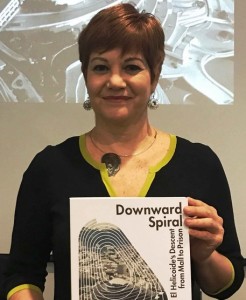Celeste Olalquiaga - Las Ruinas Modernas en la Era Digital
Terreform
Este curso investiga la relevancia de las ruinas industriales y modernistas en la cultura hipermoderna. Ésta las invisibiliza y a la vez idealiza como restos de una era pre-tecnológica. Analizando casos específicos de abandono, preservación y recuperación de ruinas modernas en América Latina, el curso propone un marco teórico para pensar el tiempo y el espacio modernos a través de la materialidad histórica y específica de las ruinas. More information.
Ruinas Modernas - Celeste Olalquiaga
DOWNWARD SPIRAL: EL HELICOIDE'S DESCENT FROM MALL TO PRISON
Editors: Celeste Olalquiaga and Lisa Blackmore
Contributors: Pedro Alonso, Carola Barrios, Ángela Bonadies, Bonadies & Olavarría, Rodrigo Blanco Calderón, René Davids, Liliana De Simone, Luis Duno-Gottberg, Diego Larrique, Vicente Lecuna, Engel Leonardo, Albinson Linares, Sandra Pinardi, Iris Rosas, Alberto Sato, Elisa Silva, Federico Vegas, Jorge Villota. Designed by Álvaro Sotillo and Gabriella Fontanillas (VACA).
Downward Spiral is published by Terreform Urban Research in collaboration with Proyecto Helicoide and support from Archivo Fotografía Urbana and the Graham Foundation for Advanced Studies in the Fine Arts.
Selected reviews: Leandro Benmergui for Artishock and Carlos Brillembourg for Art Forum.





